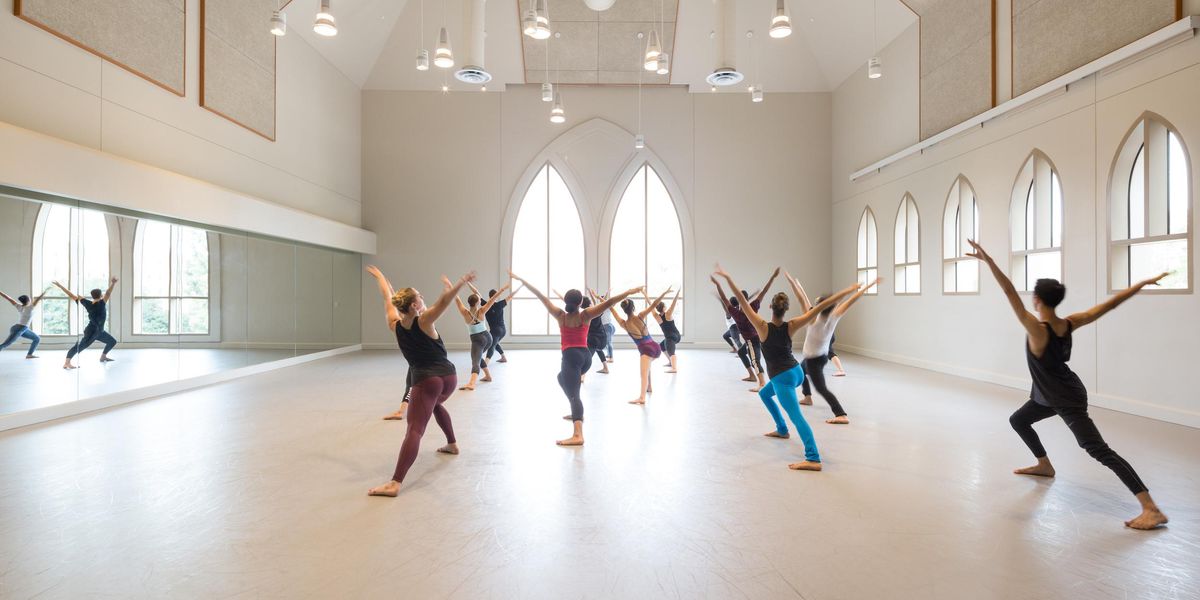Your Body Tips
Get Peppy
Add a drop of peppermint oil to your water bottle and you might find some extra bounce in your brisé. A study published in the Journal of International Society of Sports Nutrition found that when men drank two cups of water with 0.05 milliliters of peppermint oil every day for 10 days, it increased both their stamina and power on a treadmill test. Researchers think the peppermint might help by relaxing the bronchial muscles, improving oxygen flow to the brain and decreasing lactic acid levels in the blood. An extra bonus? Minty breath is always appreciated by your partner.
Got Bad Knees? Try This.
Dancers’ knees take a beating. Even though they are the largest joints in the body, when landing from a jump, the impact can equal up to four times your body weight. So how can you prevent injury? By strengthening the quad muscles. Jessica Sander, a trainer and dancer in New York City, recommends practicing this “Single Leg Lift” exercise at least twice a week, either before class or during a cross-training session:
1)
Sit with your back against a wall, keeping your spine tall and shoulders down. Hug one leg into your chest and extend the other along the floor.
2)
Trying your best not to engage your glutes, use your quad to lift the straight leg off the floor. It doesn’t need to rise more than an inch—just focus on activating the quad without compensating in other parts of the body.
3)
Perform 12 to 15 reps on each side, then repeat.
The New Super Seeds
Step aside, flax and chia seeds: Hemp is this season’s go-to seed for dancers. Why? It is loaded with iron to sustain your energy. Hemp also offers magnesium, which studies indicate may strengthen bones. And, with a mix of protein and fiber, these tiny seeds help to keep you full throughout lengthy rehearsals. They taste similar to sunflower seeds but are much smaller, so sprinkle some on salads, or mix in with yogurt or oatmeal.
A More Effective Rollout?
Every dancer keeps a ball or roller in her bag for when her muscles start aching. But several new products now let you alter the temperature—you can stick them in the freezer to make them cold, or in hot water to heat them up. But how do you know which tactic is most effective? Yuriko Nabeta, a physical therapist at Harkness Center for Dance Injuries at New York University’s Langone Medical Center, offers a few helpful guidelines.
If you experience swelling or a sudden flare-up of pain: Try a chilled ball or roller, which can help to constrict the blood vessels to reduce inflammation. It’s similar to a traditional ice massage, just less messy since you won’t have to deal with ice melting on your skin. Just be sure to keep the roller moving—if you hold it in one spot for too long, you could get frostbite.
If you’re feeling stiff or sore: Use a heated ball or roller, which will help release muscle tension. The higher temperature will open up the blood vessels, improving blood flow to tight muscles.
Find hot-and-cold rollers from Gaiam, Trigger Point Performance and Dr. Scholl’s on amazon.com.
Weird but true:
A study published in the journal Appetite found that taking a 15-minute walk reduces chocolate cravings.
Skip the Jet Lag
Flying to a new time zone on Thursday, then performing on Friday? Don’t let jet lag ruin your show. We all know that traveling long distances takes a toll on the body: Not only does the time change mess up your sleep cycle (especially when flying west to east), lengthy flights often cause dehydration and stiff muscles. What’s a dancer to do?
1. Drink water
—and don’t be shy about getting up to go to the bathroom as often as you need. Walking to the back of the cabin gives you a chance to get your blood flowing and stretch a bit.
2. Avoid alcohol on the flight
, which can dehydrate you and disrupt your sleep. Steer clear of it during your first few days on location for the same reasons.
3. If your feet and ankles are prone to swelling
, wear compression socks or stockings to fight inflammation.
4. Consider taking synthetic melatonin
(a hormone that regulates our sleep) after dark the first few days upon arrival. Studies suggest it can ease the transition—but consult a doctor to make sure it’s safe for you.
5. Regulate your exposure to light:
If you take a red-eye eastward to Europe, NASA experts recommend wearing sunglasses on the plane and until about 11:00 a.m. local time. If you take an east-bound morning flight, however, expose yourself to as much light as possible all day long. Since light is the primary environmental cue controlling our circadian rhythms, this strategy helps ease the body into the new time zone.





